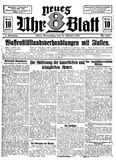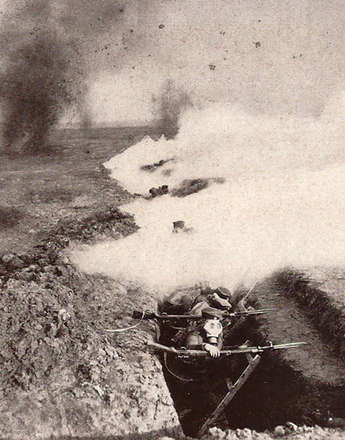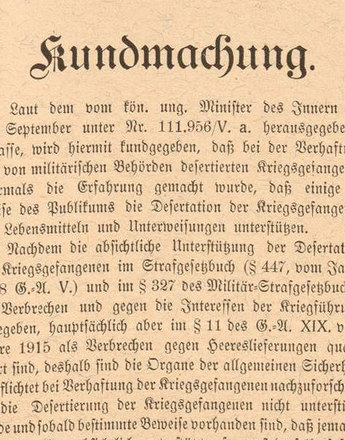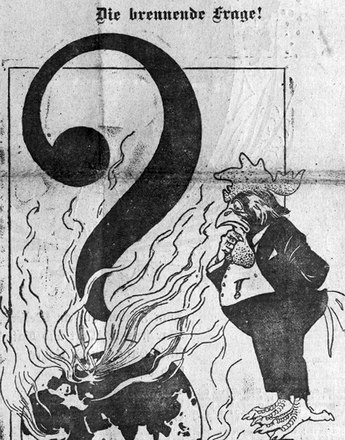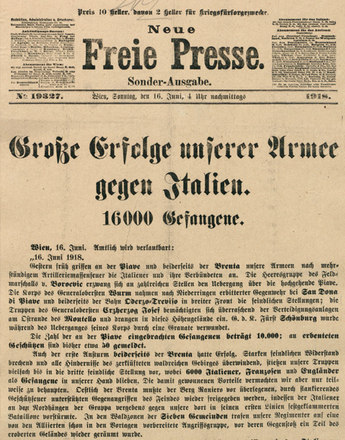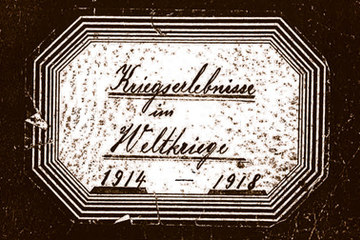On 14 August 1918, at a meeting between Emperor Karl and Kaiser Wilhelm at the German headquarters in the Belgian town of Spa, the German Chief of General Staff Hindenburg and his deputy Ludendorff for the first time stated the obvious: the impossibility of the ‘victorious peace’ that had so long been their goal.
Nevertheless, there was still disagreement about how to proceed. While Karl emphasized the necessity of immediate peace negotiations, the German side first wished to create a status quo that would give them an advantage at the negotiations. And while the German command pleaded vigorously for a continuation of hostilities, the Austrian emperor and his new foreign minister Count Burián rejected a further offensive on the Italian front or in Rumania on the grounds of the catastrophic situation obtaining both in the army and in the hinterland.
Soon afterwards the course of the war took a dramatic turn to the disadvantage of the Central Powers. The summer of 1918 saw the failure of a massive German offensive mounted with the aim of driving back the French and British armies before the Americans landed. As a result the Central Powers were exposed to the full force of the US Army, which led to the collapse of the German front line at the beginning of October 1918. Nor were the armies of the Central Powers strong enough to resist the advance of the Allied troops on the Balkan front.
Even more desperate was the situation of the Austrian army in the Italian theatre of war, where supply shortages and lack of military equipment meant that the Austrians were hardly able to put up any kind of rearguard action. The general exhaustion also led to a breakdown of discipline in the Austro-Hungarian army. While desertion had long since been a major problem, the generals were now confronted with mass desertions: by the end of the summer of 1918 the number of those who had abandoned the colours stood at 230,000.
In parallel with these developments the civilian hinterland also saw a breakdown of the authority of the organs of the state. Expressions of political resistance became ever more public, with violent rioting being a common occurrence.
On 16 October 1918, in a desperate but insufficient attempt to cut his losses, Emperor Karl published his manifesto ‘To My faithful Austrian peoples’. However, there was now no preventing the collapse of the Dual Monarchy and the middle of October saw a massive acceleration in the process of Austro-Hungarian disintegration.
On 26 October Karl finally dissolved the alliance with Germany in a telegram to Kaiser Wilhelm and followed this with a comprehensive Austrian offer of peace to the Western Powers. By this time the army was already falling apart. On 19 October the Hungarian government recalled the Hungarian regiments from the Italian front. The consequent chaos amongst the generals led to the final breakdown of the military command structure and to mutinies and disobedience in the ranks.
On 3 November the process of disintegration resulted in Austria-Hungary concluding a ceasefire agreement with the Entente Powers. Because of communication problems the remaining Austrian units laid down their arms earlier than was intended, as a result of which 360,000 men were taken prisoner by the Italians during these last hours of hostilities.
At the same time Emperor Karl transferred the supreme command to Field Marshall Baron Kövess von Kövessháza – who only found out about his ‘promotion’ two days later. In order to conceal the fact that the Emperor had concluded the ceasefire agreement, the appointment of the new supreme commander was backdated to 2 November.
Translation: Peter John Nicholson
Bihl, Wolfdieter: Der Erste Weltkrieg 1914–1918. Chronik – Daten – Fakten, Wien/Köln/Weimar 2010
Gottsmann, Andreas (Hrsg.): Karl I. (IV.), der Erste Weltkrieg und das Ende der Donaumonarchie, Wien 2007
Hirschfeld, Gerhard/Krumeich, Gerd/Renz, Irina (Hrsg.): Enzyklopädie Erster Weltkrieg. Aktualisierte und erweiterte Studienausgabe, Paderborn/Wien [u.a.] 2009
Rauchensteiner, Manfried: Der Erste Weltkrieg und das Ende der Habsburgermonarchie 1914–1918, Wien u. a. 2013
-
Chapters
- The course of the war 1917–1918: Face-to-face with imminent downfall
- The situation in the hinterland
- Apathy and resistance – The mood of the people
- The Sixtus Affair: A major diplomatic débacle
- A programme for world peace – President Wilson’s Fourteen Points
- ‘To My faithful Austrian peoples’ – Emperor Karl’s manifesto
- The collapse
- The disintegration of the Habsburg Monarchy – Part I: On the road to self-determination
- The disintegration of the Habsburg Monarchy – Part II: The situation in Vienna and Budapest
- The last days of the Monarchy


